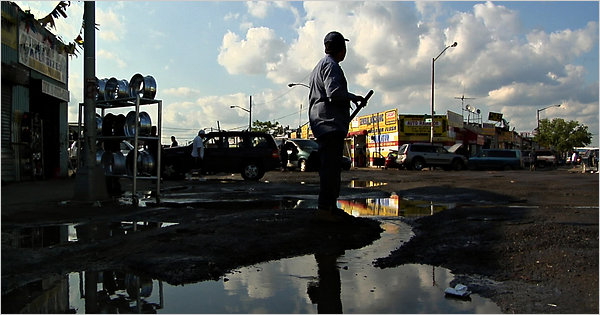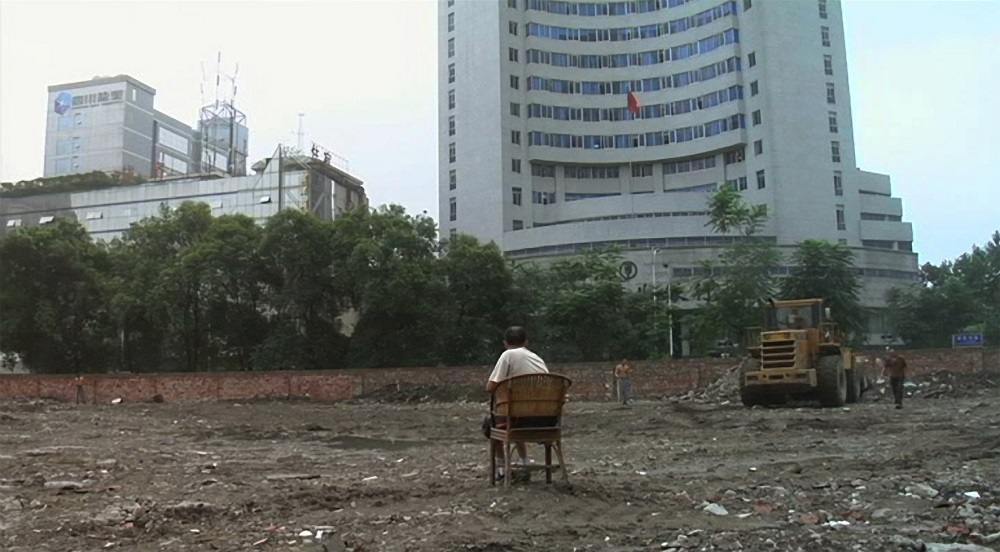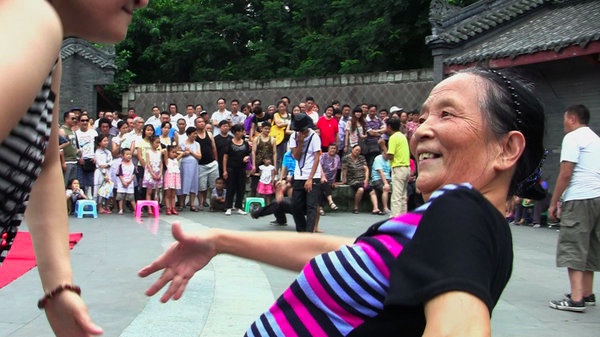As his press bio makes a point of reminding us, director J.P. Sniadecki was born on a goat farm in Michigan. But coming of age amidst the rustbelt—and later studying philosophy during his time at Grand Valley State University—is about the least interesting aspect of Sniadecki’s personal and professional maturation. For over a decade now, Sniadecki has been living and working itinerantly in China, producing a unique body of films concerned with the political and cultural implications of his chosen medium. His films, mostly observational documentaries influenced equally by contemporary Chinese mixed-media and the European ethnographic movement of yesteryear, are serene, highly tactile excavations of far-flung locales. But in forgoing the temptation to exploit the exotic elements of his surroundings, Sniadecki has quietly painted a portrait of modern day China as a diverse, demanding, and ever-evolving country, one occasionally at odds with its historical, industrial, and sociological makeup, yet nonetheless alive with cultural nuance and endurance.
In an acute move, Sniadecki joined ranks at Harvard University’s Sensory Ethnography Lab in 2005 (highlighted currently in Film Society of Lincoln Center’s Art of the Real) while pursuing his doctorate in media anthropology. Since that time, the Lab, which provides resources, equipment, and production infrastructure to its affiliates, has become arguably the most innovative and vital source for experimental and avant-garde cinema in America. Sniadecki’s work, much of which has been made in collaboration with a variety of like-minded filmmakers, is certainly of a piece with the Lab’s more well-known entries, but as of this writing he has had only a single film, Foreign Parts (2010), officially distributed in the States—and while certainly of aesthetic and spiritual accord with his other work, this collaboration with Véréna Paravel is notably the only film he’s produced outside China. Without the high profile festival berths of a Sweetgrass (2009), the inherent aesthetic intrigue of a Leviathan (2012) or the novel formalism of a Manakamana (2013) (though it could be said that People’s Park [2012] at least has an equivalent conceptual hook), it has proven difficult for Sniadecki’s work to make its way off the repertory circuit. Which is a shame, as he’s not only recently proven himself the near-equal of his contemporaries, but also as arguably the most culturally conscious and inquisitive of these filmmakers.
Despite working with a number of other directors on his most recent projects, Sniadecki’s earliest films find him shooting mostly alone, with just a small production crew joining him in alternately urban and remote locations throughout greater China. Formative experiments such as Songhua (2007) and Demolition (2008) established a personal stylistic stamp that Sniadecki more or less maintains to this day. His alternately serene and hypnotic compositional sense, via a consciously removed yet curious camera lens (with but a couple of exceptions, all of his films have been shot digitally), effectively allow his subjects to tell their own story, whether through actions, words, glances, or gestures. Songhua, which observes a variety of locals working in and around the river of the film’s title, has by nature the simplest of conceits. The Songhua, a constant source of contamination to the denial of many residents who work and allow their children to play in its placid wake, is nonetheless a destination for travelers and an outpost for humorously ambitious merchants. In his patiently involving setups and thorough documentation of a variety of these riverside tasks, Sniadecki is able to capture an at once troubling and comedic means of everyday existence, one not readily reported or relayed to outside eyes and ears.
A similar depiction of everyday labor is rendered physical in Demolition, a haunting work that charts but a single example of the widespread industrial (de)evolution occurring throughout China. A group of a few dozen men and women, whom we later come to know more intimately, has arrived in Chengdu, the capitol of Sichuan province, as migrant labor employed to dismantle obsolete structures in the face of urban advancement. The first half of the film documents the process of this destruction, as the crew toils away at worksites and attends to physically taxing duties. The images Sniadecki captures are reminiscent at times of the non-fiction hybrids of China’s leading director, Jia Zhangke, whose films Dong (2006) and 24 City (2008) would make worthy companion pieces to these outsider meditations. But rather than infuse personal and performative elements into his work as Jia often does, Sniadecki focuses on the literal task at hand. Speaking in resigned tones, the laborers outline the day to day experience of not only their work, but also the group dynamic and the communal intricacies fostered by their environment. We watch as the team cook and eat and laugh together despite their likely fleeting association, while Sniadecki casually places himself, and by extension the viewer, inside this mundane yet vital existence, his camera working as a conduit for consideration and, ultimately, illumination.
Characteristic of Sniadecki’s films, whether working solo or in tandem, is his allowance for—or in many cases encouragement of—a unique two-way exchange between director and subject. Frequently in his films an individual will not only acknowledge but speak directly to Sniadecki, who in turn responds from off-camera. He may not physically appear in his films, but Sniadecki is a consistent presence throughout, occasionally asking questions or simply prompting curiosity as his camera gazes at these people and places, absorbing everyday moments. This dialogue reaches its logical limit, becoming an acutely tangible force, in People’s Park, the most virtuoso technical achievement of the director’s young career thus far. A single, seventy-five-minute tracking shot accounts for the entirety of the film’s runtime, the camera snaking its way through Chengdu’s largest public park in one continuous take of anthropological curation. Captured from the lap of co-director Libbie D. Cohn, who was pushed around the grounds in a wheelchair by Sniadecki, the shot takes its time absorbing the park’s many visitors, employees, and performers, and as they stare or point or remain blissfully unaware of its presence, the lens becomes a stand-in for the viewer, our perspective in turn rendered a character unto itself in this slowly expanding dance of domestic diversity.
Appropriately, People’s Park ends in a moment of reverie, with a performance artist contorting himself in rhythm to the beat of a song as a nearby audience cheers him on. Unrelated activity continues to bustle in the margins of the frame, and the film concludes in media res, just as it began. Movement also plays a key role in Sniadecki’s latest film, Yumen (2013), though movement not only of a physical variety but spiritual as well. Co-directed by artists and filmmakers Huang Xiang and Xu Ruotao, the film (shot on 16mm, and thus indeed a film) takes a more radical stylistic turn than the established sense of realism associated with Sniadecki’s prior work. Like his other films, Yumen is intended to document a specific region of China—in this case a former oil town in northwest Gansu province affected by economic collapse and left to essentially rot—but this investigation is instead haunted by a series of characters who recite ghost stories of the abandoned city and conduct interpretive dances atop the remaining rubble. The camera work and editing proceed from restless and unpredictable to contemplative and sedate, both diegetic and non-diegetic music cues are employed (including a memorable interpretation of a Bruce Springsteen song), while the visual and verbal narrative parallels prove temporally disorienting while remaining viscerally invigorating (at moments reminiscent of brother-in-arms Ben Russell). It’s the first film of Sniadecki’s career that feels not only cinematically and historically attuned, but aesthetically engaged to such a degree that the work feels less of its subject than of itself—a film fascinating, in other words, above and beyond its cultural context but stronger still when pushing in unison against its formal and thematic boundaries. Sniadecki’s demonstrated that his anthropologic and ethnographic impulses can translate to distinctly American stories, but Yumen suggests that there are still exciting avenues for the director to travel within his adopted community.







